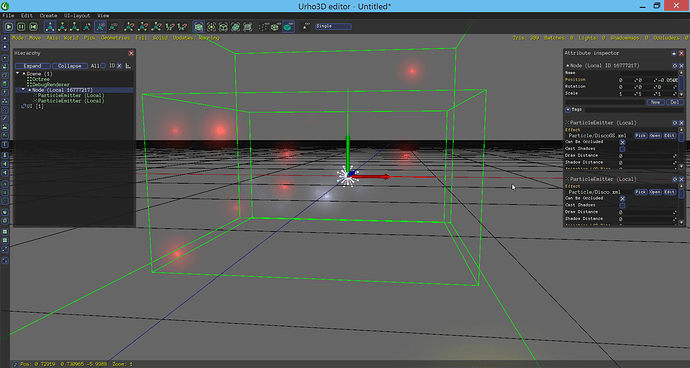@Eugene just a “does compile” check for RaspPi and Mobile. Otherwise it should be good. I did a few checks by faking a GLES target for checking some of the #ifdefs but those are at least a dozen commits behind.
The BillboardSet changes are ambiguous, I think they’re safe to drop (they’re technically safe to drop) as those changes pose problems for the Urho3D particle editor that doesn’t give you access to the nodes/components of the preview for setting the switches involved in tripping the GPU expansion of particles.
I had expected it to take 2 - 4 weeks to get merged. It raises a lot questions, in places like the dubious AA handling in line drawing, etc.
To be super-specific: the final item pre-PR was just making sure at least a droid build worked. I fought with it for a few days but did surrender as I couldn’t get CMake to do squat there
@rku unless I’m blind there’s no name-calling up there (speaking of that I’d appreciate an admin giving me back my old name of ‘Sinoid’). I went out of my way to point out that this is fairly advanced stuff and likely far outside of the capability of most.
begin sarcasm - for your long-winded comment of existential nothing
On the contrary, I want to know where you live because apparently, a person can live for free there with zero need to pay bills. Just doing zilly for fun. That, is name calling.
end sarcasm
I don’t have a real beef with you, you flatly never listened to squat I said, so there really can’t be a beef as you clearly had earplugs in the whole time. There was never a counter-voice to your extremism, so I opt for bail again rather than surrender - not going to do anything that helps splinter forks.
You basically have to use DX and HAVE to turn on the debug logging in the control panel if you so much as want to touch any of this. It’s not faint of heart material, OpenGL has squat to help you through it - which makes it a big cluster-mess if RenderDoc fails to save your bacon - which it will fail.
You’re probably completely unaware that DX requires perfect alignment of outputs to inputs and that semantics are generally meaningless aside from the VS input, you’ll get to meet those woes the instant you touch GS/HS/DS. As I said, well outside of average capability.














